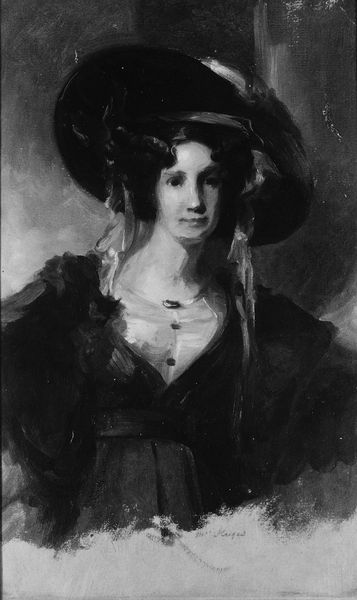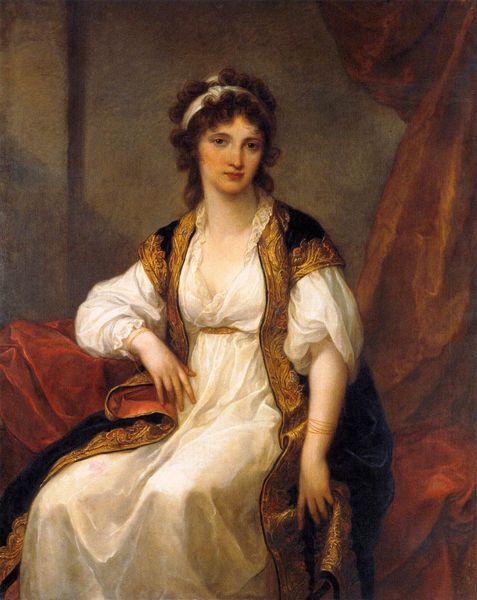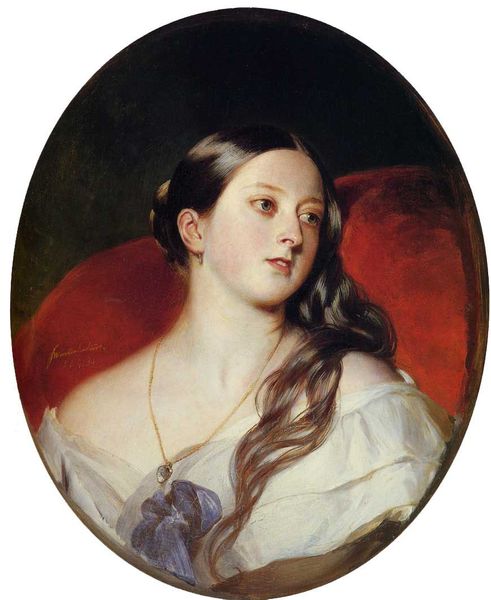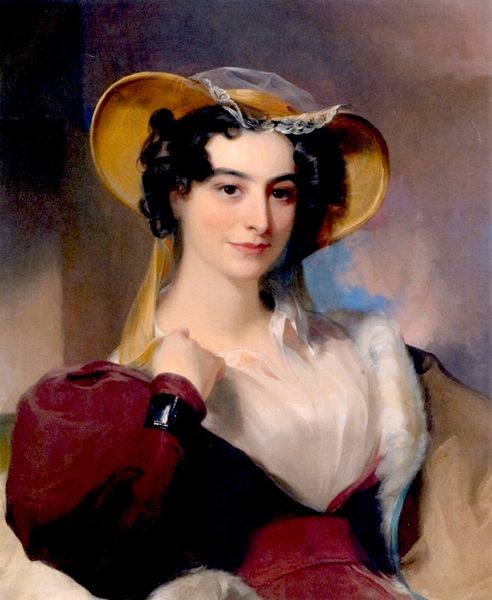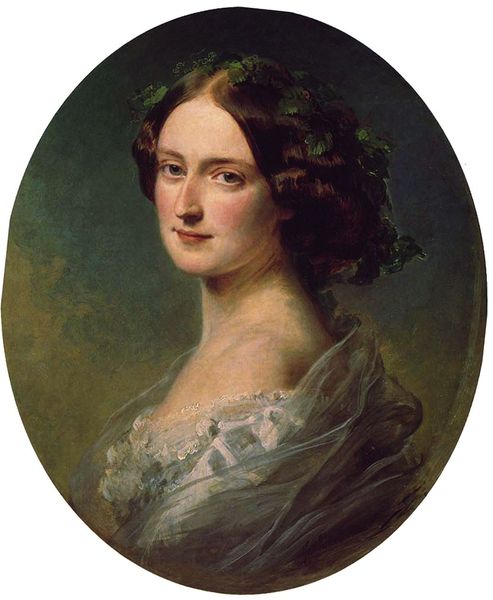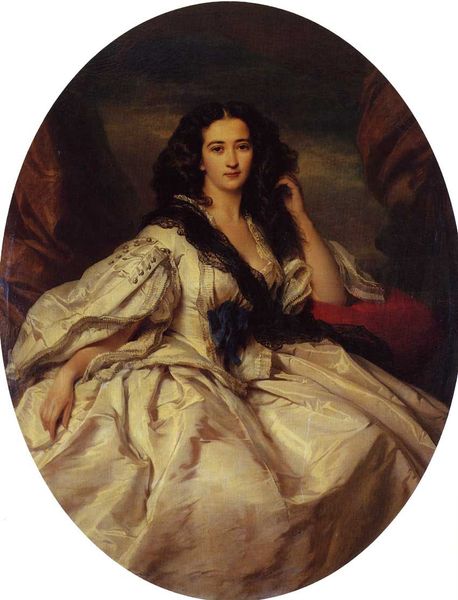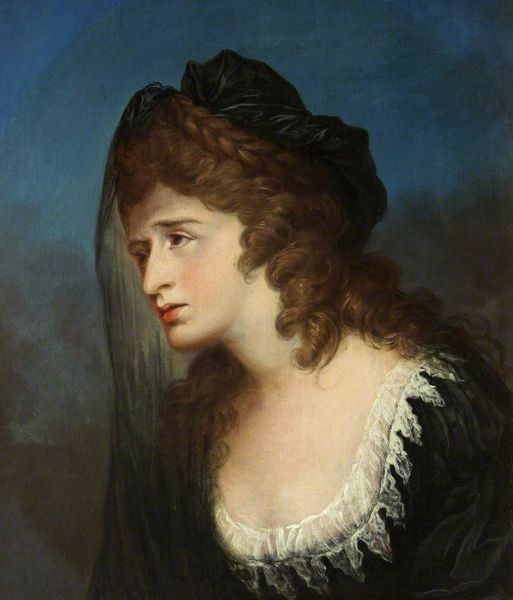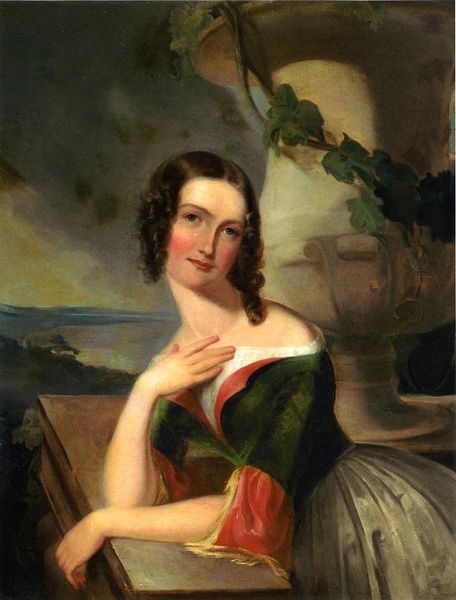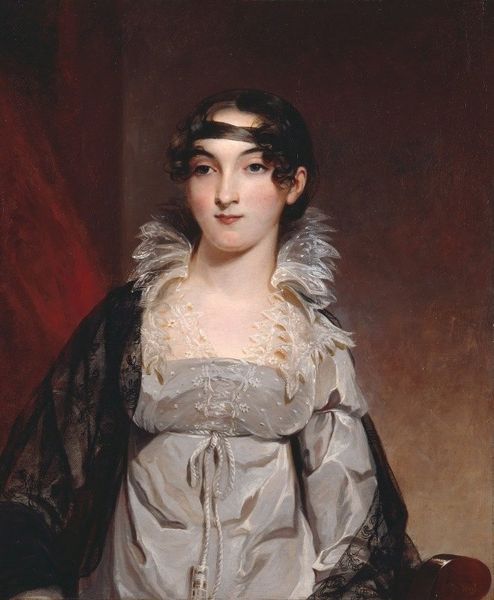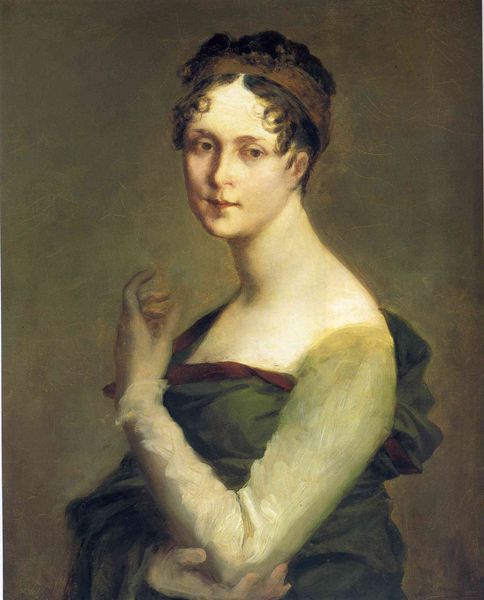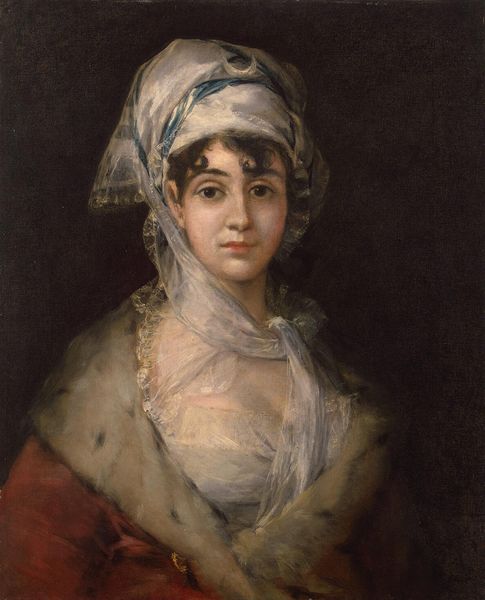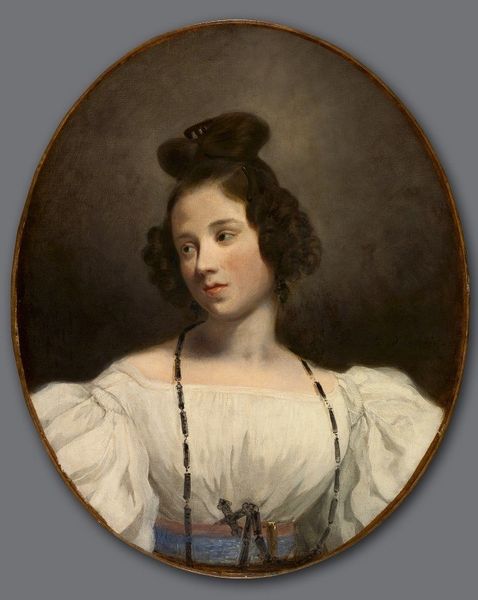
painting, oil-paint
#
portrait
#
painting
#
oil-paint
#
figuration
#
romanticism
#
academic-art
Copyright: Public domain
Curator: Here we see Thomas Sully’s “Portrait of a Lady.” Sully was celebrated for his portraiture, and his images often convey a sense of romantic idealism. Editor: There’s a quiet intensity to this painting that grabs me immediately. The cool, muted tones, the shadowy background, they lend her an air of mystery. Is she pleased, apprehensive, melancholy, all or none? Curator: I see those romantic cues reflected in the fashionable attire, especially the oversized hat adorned with ribbons. Those sartorial choices were powerful statements about social identity. Hats and ribbons also represent change, transience... even mourning. Editor: Precisely. And it raises questions, doesn't it? This woman, presented so formally, likely constrained by social expectations. Is that why there is a weariness to her gaze? We’re missing context about her station, background, personal narrative, her gaze could represent a certain awareness of societal expectations she inhabits. Curator: Or perhaps, her reserved expression underscores the Romantic ideal, hinting at deeper emotions, and reflecting the subject's interior life. In portraiture, clothing carries meaning. This dark jacket may reference stability, but the wispy lightness of her blouse hints at vulnerability, and thus creates an interesting tension between containment and expression. Editor: That duality is echoed throughout her presence, and it makes me consider how representation operates—even today. Who gets remembered, how, and what is missed or distorted when only a surface-level image remains? A beautiful oil painting from an unknown time is a fragmented relic. Curator: I would propose then that what remains potent in Sully’s depiction is the way in which he harnessed cultural symbolism to invite our imagination and interpretation across the ages. What feelings resonate as permanent beyond the confines of its temporal and aesthetic limits? Editor: Right, a good reminder to always situate our art within the social and historical tides shaping their existence, but more significantly, its continued existence within evolving contexts of the now. What endures or what is cast adrift over time speaks volumes in how we perceive and memorialize.
Comments
No comments
Be the first to comment and join the conversation on the ultimate creative platform.
